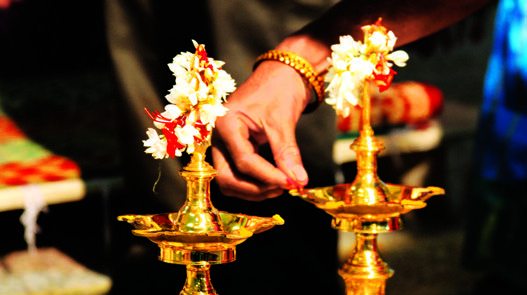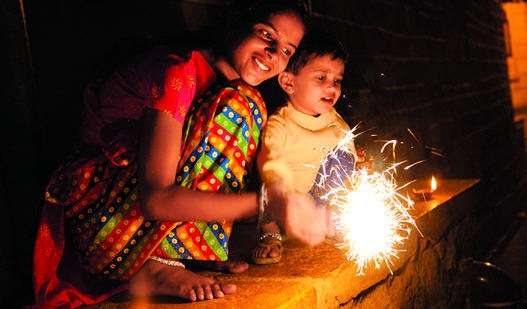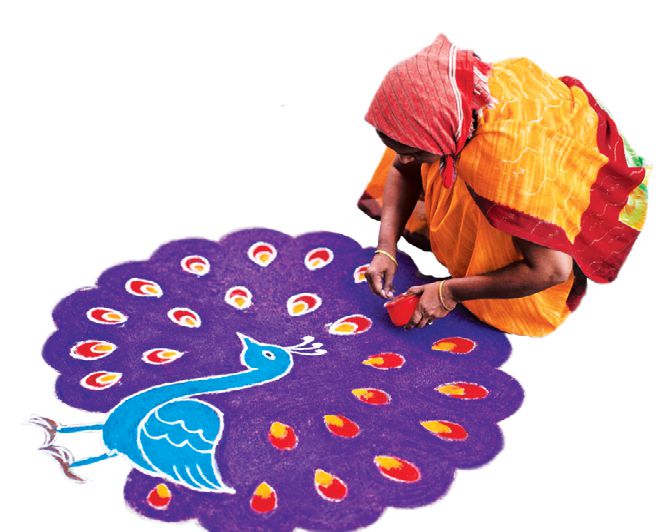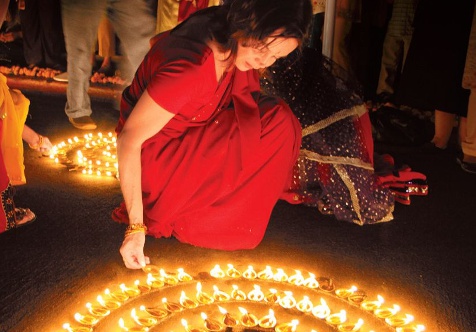In collaboration with Convergence, VOICE OF ASIA is proud to present timeless articles from the archives, reproduced digitally for your reading pleasure. Originally published in Convergence Volume 15 in 2012, we present this story on Deepavali, and the lights it brings to the lives of those who celebrate the festival.
India is a land of rich spiritual heritage where the richness of cultures accounts for the numerous festivals that are celebrated there, some lasting up to five days. With Hindus making up the majority of India’s population, perhaps the most famous is Deepavali, or the Festival of Lights.
Better known as Diwali in northern india, Deepavali is a combination of two words; “deepa” meaning ‘lights’ and “awali” meaning ‘a row’, after the little clay lamps that are placed in a row around the house and lit during the celebration. In Sanskrit, darkness is a metaphor for evil and light for good. Therefore rows of lighted lamps symbolise the victory of light over darkness, and the triumph of good over evil which is also marked by colourful fireworks on the auspicious day.
The Roots of Deepavali
This colourful celebration has its roots in many legends. perhaps the most popular tale associated with Deepavali is to commemorate the return of rama – the avatar of Lord Vishnu – after 14 years exile in the forest of Ayuthya. While he was there, Rama’s wife Sita was kidnapped by King Ravana. in striving to save his wife, Rama declared war on ravana and eventually killed him. To celebrate Rama’s return, the town of Ayuthya was illuminated with thousands of small lights to celebrate the triumph of good over evil.

Another legend talks about a demon named Narakasur who managed to acquire powers and then began to terrorize the world. He was killed by Krishna. This again depicted victory of good over evil, and the day of Krishna’s return is celebrated as Deepavali. Some also believe that it was on this day that the Goddess Mahalakshmi emerged from an ocean of milk bringing with her wealth and prosperity for mankind. In some regions, Deepavali is celebrated as the harvest festival by farmers and on this day, they offer food and praises to the gods for granting them a good harvest year.
Five Days of Deepavali
Generally, the festive season calls for the exchange of sweets, gifts and wishes and it is a time for visiting family members, neighbours and friends. Every day of the festival has its own story to tell and traditions to be followed. The first day, the eve of Deepavali, is when the houses and premises are decorated with flowers and kolam, or rangoli– colourful rice grains motifs are laid at the entrances, to welcome the Gods. it is also on this day that lamps are lit and left to burn all night.

On the second day, people take a bath before sunrise and anoint themselves with oil, herbs and fragrant powders. Fireworks are lit and oil lamps illuminate the houses throughout the day. The third day is perhaps the most important, as it is considered to be blessed by the Goddess Lakshmi, the wife of Lord Vishnu. It is widely believed that on this day, Goddess Lakshmi is in her most benevolent mood and will fulfil her devotees’ wishes. People wear new clothes while women prepare traditional delicacies and children play with fireworks and crackers.
On fourth day, the devotees throng to temples where statues of the deities are bathed with milk, honey and flowers. They are adorned with valuable clothes and ornaments, and a variety of food is offered to them. The last day, which is celebrated in some parts of india such as Maharashtra, is the day for brothers and sisters. Sisters invite their brothers to their home, and prepare delicacies for them. Brothers, on the other hand, present precious gifts and sweets to their sisters.
Around the World
Thanks to the Indian Diaspora, Deepavali is no longer confined to the sub-continent and is celebrated around the world. In the United Kingdom, the festival falls during the cold season, but that does not dampen the enthusiasm. The celebrations are preceded by a visit to the Goddess Lakshmi temple and the occasion is marked by special prayers, sharing of sweets, burning incense sticks, lighting oil lamps and also blowing the conch shell.

In Malaysia, a country renowned for its ethnic diversity and colourful potpourri of rich heritage, Deepavali is a national celebration. The day begins with a traditional Indian oil bath and includes visits to temples and prayers at household altars. Oil lamps and Kolam are common sights during the celebrations. A uniquely Malaysian tradition is the open-house concept, where people invite friends and well-wishers to their houses during festive seasons. needless to say, many open-houses are held during Deepavali – some held by individuals, others hosted by corporations and government ministers.
The style of the celebrations has greatly evolved with time. Even so, the principle remains. It is a festival to eliminate darkness, not just literally, but also in the hearts and lives of millions of people who celebrate this meaningful festival. It is a festival of hope and peace, a time for forgiveness and freedom. A celebration of illumination, Deepavali gives people hope of freedom and eternal happiness.



